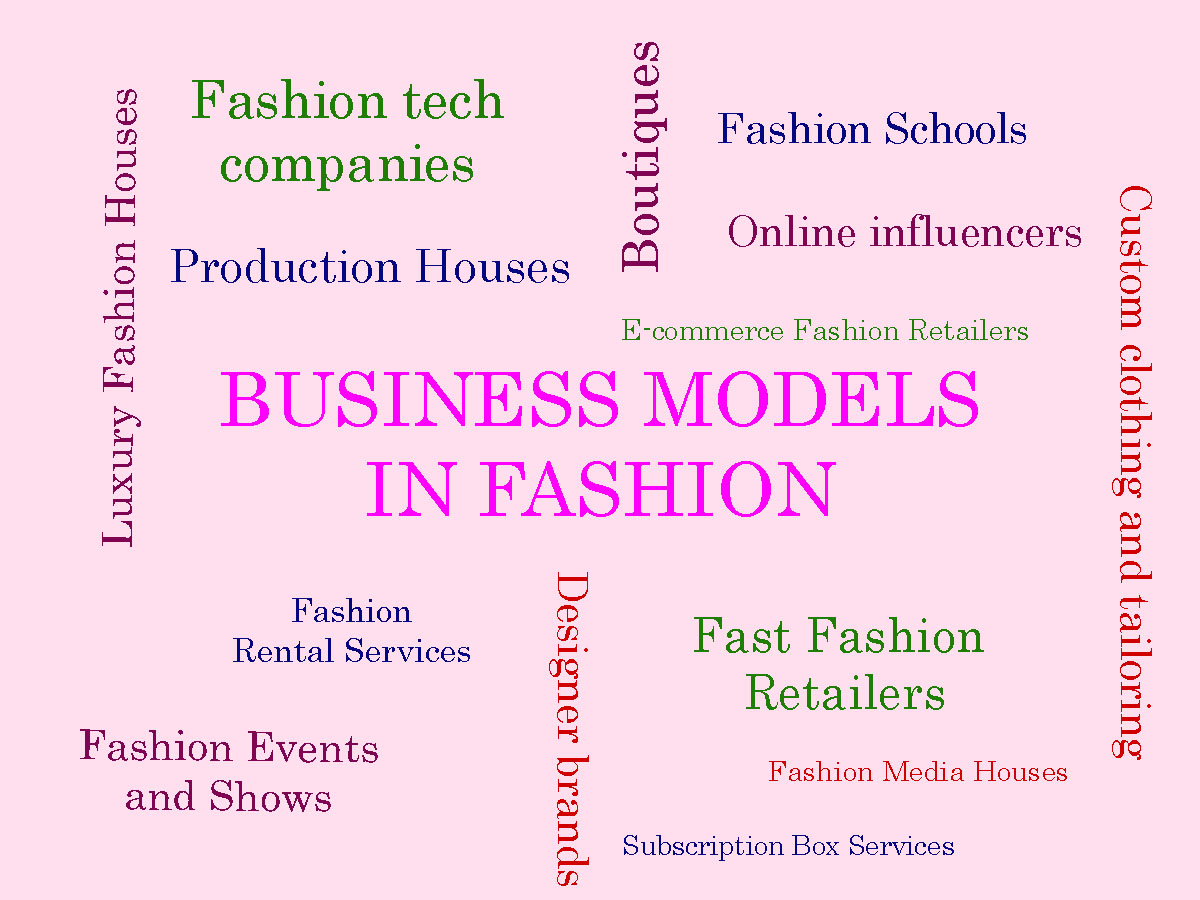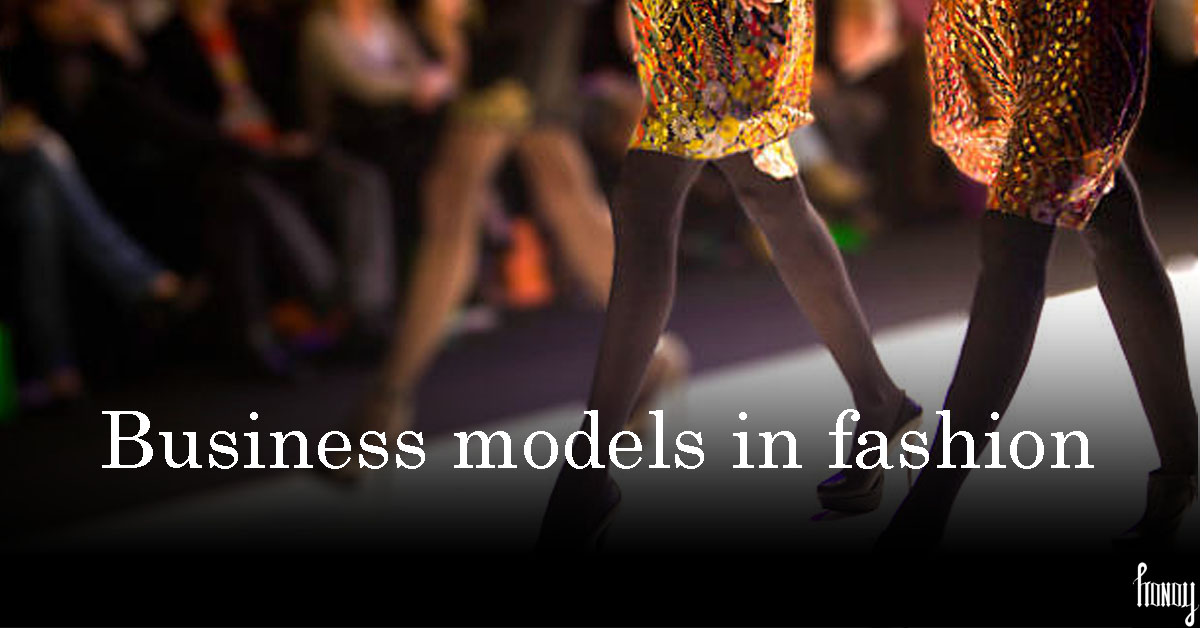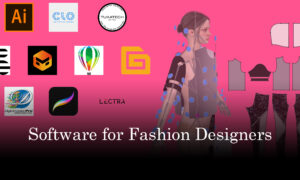Successful business models in the fashion industry
Having glimpsed at the structure of business of the fashion industry in the previous post, now it is time to take a magnifying glass and get into the details of it. By now it is very clear that because fashion is so vast and complex in nature, it needs multiple level of functioning in order to cater to the entire world’s fashion needs. And so there are many ways in which people create business models that cater to the never-ending consumer demands.
Because there is a need to be fulfilled at every level of the society based on status, gender, age, geography, culture, and multiple other factors there are fashion businesses that cater to each of these specific needs. We will inspect the broad categorization in which these fashion business models can be understood. Please note that this blog focusses only on business models that deal with clothing as a fashionable item and not accessories, footwears etc., although similar business models will apply to them also. But that we will discuss some other time. Here I give you 14 successful business models in the fashion world.
Fashion houses
At the highest level of fashion, there are brands that produce the most exclusive of fashion. Always leading and inspiring the rest of the business players, these fashion houses often have rich history of creativity and revolutionizing the world of high fashion in one way or the other. Popular examples of fashion houses include Chanel, Gucci, Prada and countless many more. These Fashion houses have empires that expand into all realms of fashion like haute couture, RTW fashion, high end jewellery, accessories, perfumes, footwear etc. Popular Indian fashion houses like Sabyasachi, Tarun Tahiliani are also establishing their legacies in this format of business models.
Designer brands
While luxury houses have high investments and bigger clients, most fashion designers who have their own identity set up their own fashion houses. With limited means but high on creativity, these designer brands cater to a very nice client based on aesthetic appeal. If they are able to sustain in the competitive world of fashion, often these designers will find the financial backing in the long term and will aim to become a Luxury Fashion House.
Fast fashion retailers
A successful business models in retail, usually produce inexpensive clothing inspired by the latest trends set by leading brands and fashion designers in the world. Their focus is quick turnover and supplying the customer with the latest fad in fashion so that they keep coming back for more. There appeal lies in catering to the masses but setting standards in quality at par with price. Popular brands who follow this model of business are Zara, Mango, H&M, Forever 21 etc. But there are also levels to this business model, depending on the reach of the shop, from being a local merchant to a global one.
Production Houses
These are not design houses or brands, but they are the backbone of the fashion industry. Not every designer is capable of mass producing their collections and so they hire these production houses which do that job for them. Often employing high end technical labor, these fashion production houses will have fashion merchandisers that will act as mediator between the client and the production teams. These work across the globe and provide designers from all over the world the support to produce their dream collections.
Boutiques
A very unique fashion business model is the local boutique in your city. Independent boutiques are places that curate selections of clothing with a focus on unique and/or local designers. They offer a very personalized shopping experience and often target a very nice audience.

14 types of fashion business models
Custom clothing and tailoring
Before designer brands were the ‘it’ place to shop fashionable clothes, the tailoring shops in the neighborhood were the place to experience bespoke fashion making. Customer would generally take their own fashion choice and reference and will often get custom clothing done as per their own requirements and budgets. These are those few places that will also offer darning services. This was one of the most successful business models in older times as it laid the cornerstones for the social structure of community fashion.
E-commerce fashion retailers
With the advent of the internet and the effects of pandemic, online selling is the future of fashion business. These online e-retailers operate primarily online, leveraging digital marketing and online platforms to reach customers. Many brands/boutiques/designers now have online presence to reach a wider audience.
Fashion Rental Services
For some consumers, buying expensive garments is not always an option but at the same time they wish to experience the luxury that these clothes provide. The renting business model bridges this requirement gap. This is a very economical and sustainable alternate to fast fashion, where in for a rental fee which is far less than the actual price of the garment, one can enjoy the fashionable creations on their special occasions and also do not have to worry about burning their pockets.
Subscription Box Services
A very innovative service that has recently come up is the ’subscription box services’, where in stylists will curate fashionable items for the customer based on personal choices and preferences. For a timely subscription fee, the consumer will receive clothes tailored to their style and budget. This kind of business model puts a very heavy emphasis on understanding customer needs rather than creation of new designs.
Fashion Events and Shows
As part of the event organizing side a successful business models, these fashion industry businesses specialize in organizing fashion events, such as runway fashion shows, trade fairs, and exhibitions, where designers showcase their collections and at the same time, they provide business opportunities by connecting the seller and buyer directly.
Fashion Media Houses
Fashion is a global network of constant cultural exchange and inspiration because of the media network of news, magazines, publications, television networks and the internet. Media companies generate revenue through sponsored content, advertisers, and subscription services.
Online influencers
The social media has revolutionized the way how consumers can be informed and influenced. Now with applications like Instagram and blogging there is a new way of establishing a business model. The online influencer drives revenue generation via content creation, endorsements, and donations from avid fan base.
Fashion tech companies
Businesses in this category focus on researching and developing the latest technology that will push the boundaries of the fashion industry. From developing robotic cutting and sewing systems, augmented reality for shopping experiences, sizing algorithms and sustainable production tools are just some of the examples to look at.
Fashion Schools
This is the most different aspect of the business of fashion yet an important one. Preparing the new generation of designers and entrepreneurs is a very essential part for any industry. These institutes are a major centre of networking as alumnus create communities and a network of interrelated businesses discussed above.
Conclusion
These are just the very broad and the most common business plans that exist in the fashion of business. But as the sky is always the limit in this field, there are hybrid business models that always combine many of the aspects of many of the models from the list. Have I missed anything on this list, if so, please write in the comments and share that with all of us. And if you want any particular model to be explored further, do write to me and we can discuss in detail.





























Pingback: 11 Top skills to run a successful fashion business